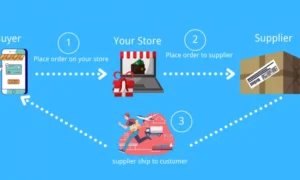Marketing budgets disappear faster than office donuts, yet returns often barely register on performance dashboards. Most marketers blame external forces—algorithm shifts, rising costs, fierce competition—while the actual saboteurs may operate behind the scenes. Recognizing these hidden ROI destroyers transforms lackluster campaigns into profit-generating machines.
Here are some causes for low ROI when it comes to your marketing campaign.
Poor Targeting and Audience Misalignment
Audience research documents might impress executives, but real customers rarely behave as theoretical personas suggest. Campaigns frequently fail because marketers target ideal customers rather than actual buyers. That perfect demographic profile developed months ago has likely shifted, evolved, or migrated to entirely different platforms. Data tells compelling stories, though marketers often misinterpret the narrative. Analytics might reveal strong engagement from specific age groups, but deeper analysis exposes browsing without buying behavior. Meanwhile, overlooked segments quietly convert at impressive rates while receiving minimal budget attention. Successful campaigns demand continuous audience validation through systematic testing of smaller segments before major spending commitments. Customer behavior evolves rapidly—faster than most marketing strategies can adapt to changing preferences and habits.
Budget Allocation Mistakes
Pouring money into underperforming channels rarely solves fundamental strategy problems—it simply amplifies existing failures. Many marketers distribute budgets based on personal biases or industry standards rather than actual performance data from their specific business context. Expensive display campaigns might generate impressive impression counts while contributing zero meaningful conversions to bottom-line results. Channel effectiveness varies dramatically between industries and individual businesses within identical sectors. Competitor success with influencer partnerships doesn’t guarantee similar outcomes for different businesses targeting different audiences. Smart budget allocation requires ruthless prioritization based on measurable results, not vanity metrics that look good in reports. Starting with modest test budgets across multiple channels and then aggressively funding proven performers while eliminating underperformers creates sustainable growth. Most campaigns suffer from scattered resources rather than insufficient total funding—concentrated focus beats broad distribution when dollars remain limited.
Creative and Message Problems
Award-winning ad creatives might earn design recognition while completely failing to connect with potential customers. Stunning visuals and clever copywriting become worthless when they fail to address genuine customer pain points or communicate clear value propositions. Many campaigns prioritize brand consistency over conversion optimization, producing beautiful advertisements that generate zero customer action. Message-market alignment trumps production value every time. Customers respond to solutions, not corporate slogans or mission statements. Target audiences care little about business philosophies—they want specific information about how products improve their particular situations. Testing multiple message approaches before investing in expensive creative production often reveals surprising insights. Sometimes, direct, simple communication outperforms elaborate campaigns by substantial margins. Clarity beats creativity when conversions matter more than brand awareness metrics.
Technical Issues and Fake Clicks
Hidden technical failures drain campaign budgets while marketers blame everything except the actual source. Slow-loading landing pages, broken tracking implementations, or poor mobile optimization sabotage even perfectly targeted advertising efforts. Beautiful advertisements might drive qualified traffic to pages that fail to function properly on mobile devices—where most modern browsing occurs. Sophisticated ad fraud operations mean budgets often fund automated bot traffic instead of reaching genuine potential customers. Implementing quality ad fraud protection solutions has become essential for maintaining campaign integrity, though many marketers overlook this growing financial threat. Click farms and automated systems consume advertising dollars while generating zero authentic customer interest. Platform algorithms don’t always detect advanced fraud attempts, leaving marketers wondering why engagement metrics appear strong while actual conversions remain disappointingly weak. Regular traffic quality audits, combined with robust fraud detection systems, protect campaign investments from artificial inflation that skews performance data.
Measurement and Attribution Gaps
Attribution models might credit incorrect touchpoints while ignoring actual conversion drivers throughout customer journeys. Most marketers depend on last-click attribution, which overlooks complex paths leading to eventual purchases. Expensive video campaigns might create initial brand awareness, but search advertisements receive credit for final conversions—skewing budget allocation toward lower-funnel tactics that appear more effective. Cross-device tracking complications create significant measurement blind spots in modern customer behavior patterns. Users research smartphones, compare options on tablets, and then complete purchases on desktop computers. Without proper attribution modeling, campaigns appear to underperform while actually contributing substantial value through assisted conversions that remain uncredited. Contemporary customers interact with businesses across numerous touchpoints before making final purchase decisions. Measurement systems must account for this complexity or risk eliminating successful campaigns that don’t demonstrate immediate direct returns. Implementing view-through conversion tracking and comprehensive assisted conversion reporting reveals true campaign contributions to business growth.
Conclusion
Low ROI rarely stems from isolated issues—multiple problems typically compound to create disappointing overall results. Being cognizant of potential issues may help you see great improvement in your marketing efforts and campaigns.




























